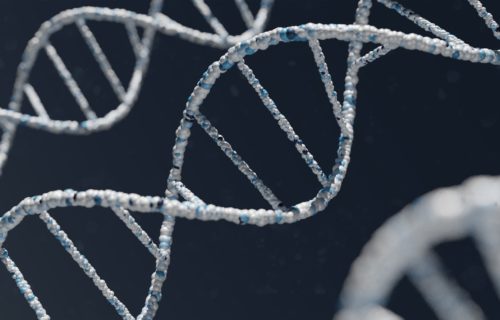‘It’s important to note that these genes do not predestine anyone to problems, but it’s also important to understand that there could be heightened risks.’
DURHAM, N.C. — Suicide may be a hereditary trait, according to new research.
The study of members of the United States military identified four genes that can heighten the risk of suicidal thoughts and actions. While more work is necessary to determine whether identifying these genetic markers might lead to targeted treatments, scientists from Duke University Medical Center say their findings advance the understanding of how inherited risk factors play a role in the development of suicidal thoughts and risky behavior.
“It’s important to note that these genes do not predestine anyone to problems, but it’s also important to understand that there could be heightened risks, particularly when combined with life events,” says Nathan Kimbrel, Ph.D., associate professor in the Department of Psychiatry & Behavioral Sciences at Duke, in a media release.
Prof. Kimbrel and his colleagues conducted a large, genome-wide analysis using data from more than 630,000 U.S. military veterans. From this group, 71.4 percent were of European ancestry, 19.1 percent African ancestry, 8.1 percent Hispanic, and 1.3 percent Asian. Most of the participants were men.
Within that group of veterans, medical records revealed 121,211 cases of suicidal thoughts or actions. Participants were classified as controls if they had no documented history of self-harming behavior.
Which genes pose the greatest risk for self-harm?
Through a genome-wide analysis of blood samples, the research team identified several genes that were evident among participants with documented cases of suicidal thoughts or actions, regardless of their ancestral background. Four genes had the strongest links and have been previously associated with psychiatric conditions.
One of them ESR1, an estrogen receptor, has been previously identified as a causal genetic driver gene of PTSD and depression, which are risk factors for suicidal behavior among veterans.
Estrogen is also a suspected cause of sex differences in depression rates, and the loss of ESR1 has been found to produce detrimental effects on brain tissue in men.
The second gene identified was DRD2, a dopamine receptor, which has previously been associated with suicide attempts, schizophrenia, mood disorders, ADHD, risky behavior, and problem drinking.
The third, DCC, is expressed in brain tissue and has been associated with multiple psychiatric conditions. Studies have found elevated levels in the brains of people who die by suicide.
The fourth suicide-related gene identified, TRAF3, is associated with antisocial behavior, substance abuse, and ADHD.
Is there a treatment for people with these genes?
Prof. Kimbrel says that lithium — a “gold standard” treatment for bipolar disorder shown to reduce suicide risk — modulates the expression of TRAF3 and several other inflammatory genes. In addition to those four genes, the research team also identified nine additional ancestry-specific risk genes.
“While genes account for small amount of risk relative to other factors, we need to better understand the biological pathways that underly a person’s risk for engaging in suicidal behavior,” Kimbrel says. “Suicide is the cause of over 700,000 deaths annually and is the fourth-leading cause of death among people ages 15 to 29 years old. The more we know, the better we can prevent these tragic deaths.”
The findings are published in the journal JAMA Psychiatry.
South West News Service writer Mark Waghorn contributed to this report.

